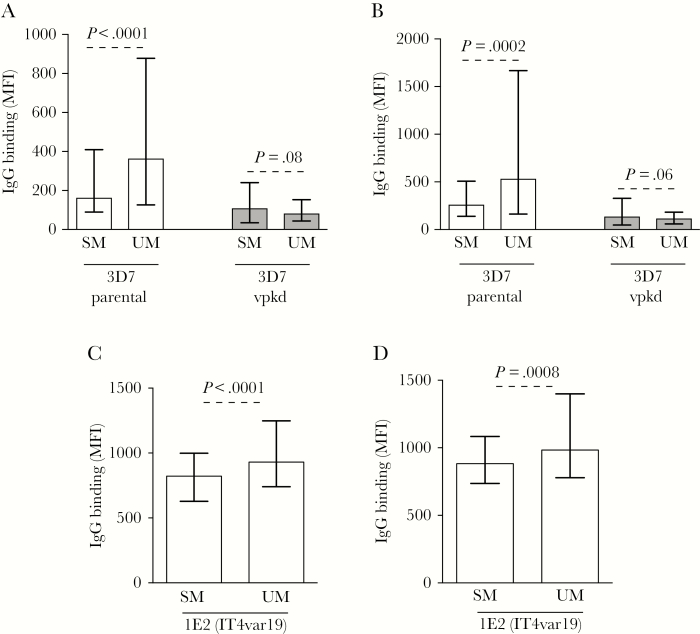Figure 2.
Antibodies to Plasmodium falciparum–infected erythrocyte (IE) surface antigens are higher among young children presenting with uncomplicated malaria (UM). A and B, The level of immunoglobulin G (IgG) binding to the surface of erythrocytes infected with 3D7parental and 3D7vpkd parasites was higher in samples from UM compared to severe malaria (SM) at both acute infection (A) and convalescence (B). Assay was performed once; bars represent median and interquartile range (IQR) of samples that were classified as antibody positive to 3D7parental (A, n = 182/235 for SM and n = 177/213 for UM; B, n = 157/184 for SM and n = 153/173 for UM); P values were calculated using an unpaired Mann–Whitney test. C and D, The level of IgG binding to the surface of erythrocytes infected with 1E2 (IT4var19) parasites was higher in samples from UM compared to SM at both acute (C) and convalescence (D). Assay was performed once; bars represent median and IQR (C, n = 235 for SM and n = 213 for UM; D, n = 184 for SM and n = 173 for UM); P value was calculated using an unpaired Mann–Whitney test. Abbreviations: IgG, immunoglobulin G; MFI, mean fluorescence intensity; SM, severe malaria; UM, uncomplicated malaria.

